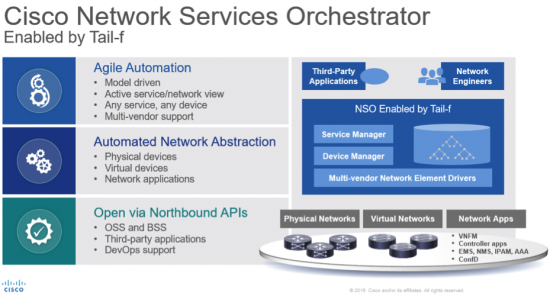































What does it take to be an agile digital service provider in today's competitive marketplace? For Level 3, it's all about speed, simplicity, and flexibility.

Claudio Scola (pictured left), Level 3's director of global product marketing, spoke with Cisco about how the company is using orchestration and software-defined networking (SDN) to deliver customized service offerings and stand out from the crowd.
Transforming the Customer Experience
For Level 3, success begins and ends with the customer. It sounds simple, but it can be a tricky transition for communication service providers (CSPs). After all, for many years, customers viewed network services as plumbing. So, many CSPs competed largely on price-and found their businesses getting commoditized.
"If you give everyone the same baseline, it's going to be ok for some but also poor for some other people," says Scola. "The old style of making a million widgets that all look the same because you've got economies of scale created an outdated user experience, and it isn't working anymore."
Level 3 is taking a different approach by starting with a simple premise: No two businesses are the same, so their network solutions shouldn't be either. The company built a foundation to deliver customized network services on demand. Today, customers can select the specific combination of features and services for their needs. They can choose packages that flex capacity up and down based on network performance triggers or scheduled workloads, and pay only for the resources they use. And they can design and order their own tailored network solutions through a self-service portal.
Automated, Adaptive Service Delivery
That kind of tailored service delivery sounds great, but there's a reason most service providers have used a one-size-fits-all approach: Delivering custom services on demand is hard. A large operator can have tens of thousands of heterogeneous networking devices from multiple vendors, as well as different management and operational processes in different markets. You can use scripts to automate some of that. But if you have to spell out every single step in provisioning every service, those scripts get very complex. And with a large network that changes all the time, managing scripts and keeping them up to date becomes a monumental effort.
Level 3 knew they needed a simpler, more flexible long-term approach. So they opted for SDN network programmability, with an orchestration layer that abstracts away all of the underlying complexity. Using Cisco Network Services Orchestrator (NSO) enabled by Tail-F, Level 3 network engineers can design service offerings once, describing both high-level services and myriad underlying networking devices in the standardized Yang modeling language. The system maintains a single real-time database of every device and resource in the network. When someone requests a change, it analyzes the available resources and reprograms the network to execute it-without having to be told explicitly how, and without disrupting running services.

Level 3 (and its customers) can now start with a high-level command: "Create a new E-line circuit to this office." Or "Spin up a new development environment in the public cloud, with a secure connection to my product team." For example, Cisco NSO automatically reprograms the network to make it happen. Nobody has to spell out which devices and cloud services should be activated, or how they should be configured. Customers don't have to wait weeks for Level 3 to manually deploy and configure new hardware. The network handles everything, automatically, in minutes.
An Agile Foundation for the Future
It all adds up to big benefits for Level 3 and its customers. New services and changes can be made much faster-which translates to faster time-to-revenue. Errors and service disruptions associated with complex manual configurations largely disappear. Level 3 is separating itself in the marketplace by delivering customized solutions that other CSPs can't match. And Level 3 customers get exactly what they need, exactly when they need it.
"We no longer need to differentiate ourselves with the plumbing -with speeds and feeds," says Scola. "Now, we can do it at a service layer, with software and the customer experience."
View Level 3's Software Defined Networking Success Story
There's a lot more to the story. Read on to learn how Level 3 is using its programmable network to transform the customer experiencehere.

Find Out More
To find out what Cisco Network Services Orchestrator can do for your business, visit www.cisco.com/go/nso.
And for more details on how Level 3 is leveraging NSO, please view their case studyhere.
 Tags chauds:
réseau
#nuage
Le SDN
digital
orchestration
Cisco NSO
Cisco Network Services Orchestrator
Network as a Service (NaaS)
Level 3
Tags chauds:
réseau
#nuage
Le SDN
digital
orchestration
Cisco NSO
Cisco Network Services Orchestrator
Network as a Service (NaaS)
Level 3